They are easy to care for, cope well with warm and drier weather and are deeply rooted in our German culture. Anyone looking for a new tree for their garden will find all the information about the linden tree here.

Linden trees have been playing for centuries (Tilia) play a major role in our culture and mythology. Even today you can still find the sometimes very stately trees on town hall squares in the center of the village. Linden trees love warmth, are insect-friendly and there are now varieties in a wide variety of sizes, so there is something for everyone. For this reason, linden trees are one of the most common trees in cities. This article will tell you how to plant linden trees in the garden, what properties they have and what to consider when caring for them. We also show which diseases and pests can affect linden trees.
contents
- Linden tree: flower, leaves and characteristics
- The most beautiful linden species and varieties for the garden
- Winter linden
- Summer linden trees
- Planting linden trees: location and procedure
-
Proper care
- Water and fertilize linden trees
- Cut linden trees
- Common pests and diseases of the linden tree
- Multiplication
Linden tree: flower, leaves and characteristics
Linden trees are assigned to the Mallow family (Malvaceae). There are around 50 species of linden trees worldwide. We mainly have the summer linden (Tilia platyphyllos), the winter linden (Tilia cordata) and a hybrid between the two species, the Dutch linden (Tilia x vulgaris), represent. The original distribution of linden trees extends over the temperate regions of North America, Europe and Asia. The leaves of many species of linden are heart-shaped, which is why linden trees are also known as trees of love.
Tip: Another special feature of the foliage is that, especially in autumn, when it falls from the tree, it smells very good, decomposes well and makes an excellent compost.

Linden trees reach heights between 15 and 40 meters, depending on the type and variety. They can live to be over 1000 years old, which is due to their high rash - they can sprout again and again after damage and illness. Linden trees develop a taproot in the first years of growth; the root system of older trees, on the other hand, is heart-shaped. Therefore, linden trees can also be used to fortify slopes.
Linden trees also develop secondary roots, which have a decisive advantage: Linden trees have only a few mechanisms that protect against fungal attack. It often happens that the trunk is attacked by fungi and decomposed, and with increasing age the tree becomes hollow from the inside. As a rule, this does not mean that the trees are dead, because the secondary roots grow in the Inside the trunk downwards and thus continue to provide the trees with water and nutrients secure.
The fruits of the linden are spherical to egg-shaped nuts that fall off as a whole. A dry-skinned bract serves as a flying horn for the wind to spread.
Despite everything, linden trees are rather weak in competition, which is why they can hardly be found in modern forests.
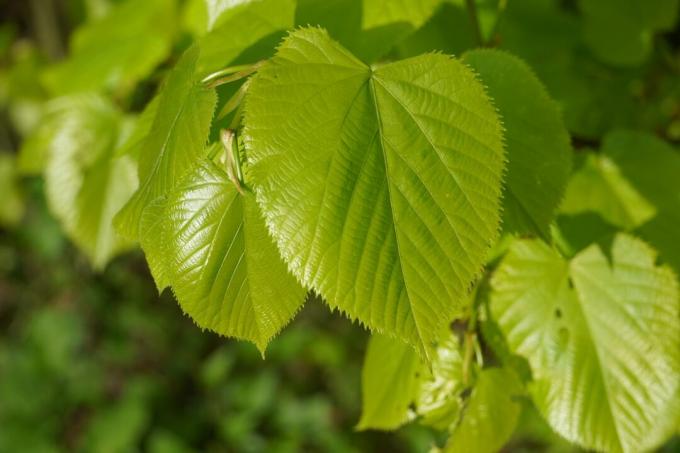
When do linden trees bloom? The summer linden trees bloom from the beginning to the middle of June, followed by winter linden trees two weeks later. With up to 60,000 creamy white and pleasantly fragrant flowers, linden trees are not only a real splendor for us humans, but also a magnet for insects and a huge bee pasture. Linden trees thus provide food for the hard-working animals once again when most of the other trees have long since faded. This makes the linden a very important herb for honey production. At the same time, the linden blossom marks the beginning of phenological midsummer.
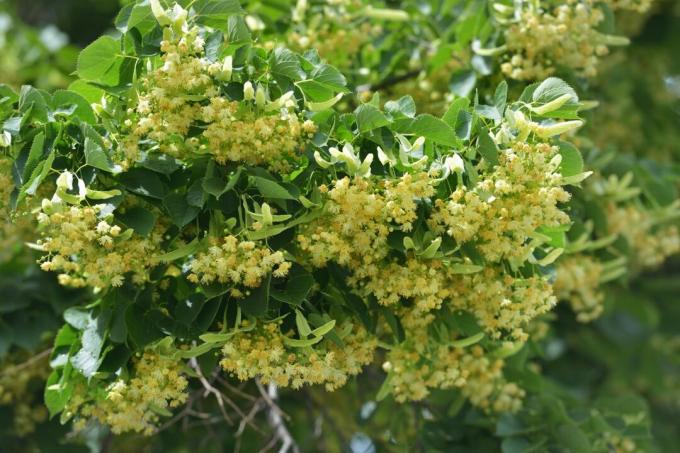
The most beautiful linden species and varieties for the garden
In addition to species such as silver linden (Tilia tomentosa) or American linden (Tilia americana) are naturally mainly winter and summer linden trees as well as their hybrid form, the Dutch linden tree. There are different varieties of these, which differ mainly in their size and the width of the crown.
Winter linden
Winter linden trees often have a splendid autumn foliage color. They have moderate nutritional requirements and are adaptable to the soil. They usually also tolerate urban climates and short dry periods.
- Tilia cordata "Greenspire": This linden variety is one of the best-known and most established varieties in cities. It grows to a height of 13 to 20 m and is considered to be very tolerant of drought and heat. The ovoid, closed crown of Tilia cordata‘Greenspire‘ can be up to 13 m wide.
- Tilia cordata ‘Rancho’: With a height of 8 to 12 m, ‘Rancho’ is even smaller than ‘Greenspire’ and therefore perfect for many gardens. This linden variety grows slowly, is very wind-resistant and is usually not attacked by aphids. The crown of ‘Rancho’ is initially narrow and monotonous, but with increasing age it becomes more rounded and can reach a width of up to 8 m.
- Tilia cordata 'Monto': This is one of the smallest varieties of the winter linden tree. ‘Monto’ is only 4 to 5 m high, grows very slowly and is a specialty with its spherical crown shape. It should be noted, however, that ‘Monto’ rarely flowers and fruit. The variety is also more prone to leaf spot disease.
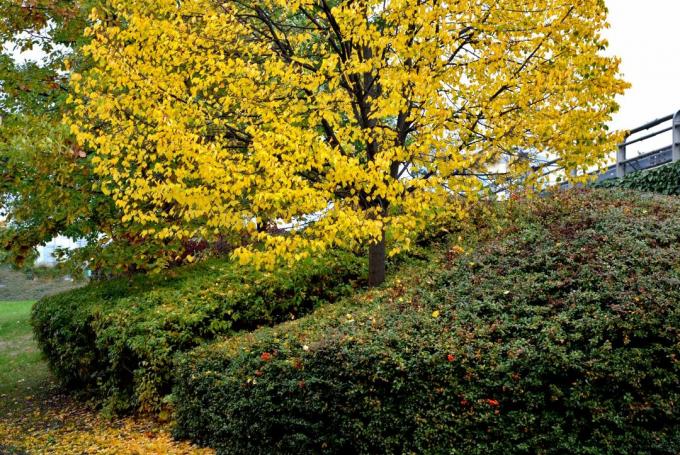
Summer linden trees
Summer linden trees are much more demanding than winter linden trees. They love evenly moist, deep and nutrient-rich soils. In addition, they love warmth and are prone to frost, dry air, drought, air pollution and salinisation of the soil. Therefore, they are only suitable for certain locations.
- Tilia platyphyllos ‘Fastigiata’: Due to the steep upright growing shoots, this variety has an interesting, narrow pyramid shape. Under good growing conditions, ‘Fastigiata’ reaches a height of 25 to 30 m and remains very slim with a width of only 3 to 4 m.
- Tilia platyphyllos ‘Zelzate’: With a height of 12 to 20 m, ‘Zelzate’ is a somewhat smaller, but fast-growing variety. ‘Zelzate’ is characterized by its dense, egg-shaped to pyramidal crown, which is 4 to 5 m wide. The tree is considered to be very disease resistant.
- Tilia platyphyllos ‘Örebro’: The name already indicates that it is a variety from Sweden. It was increased there from 1935. ‘Örebro’ has a rather slow growth and reaches a height of 15 to 18 m. The side branches, which grow upright at first, bend down after about 10 years and give ‘Örebro’ an egg-round crown shape. Another special feature of this summer linden variety is that it flowers very richly and smells intensely.

Some more interesting types
- Henry's Linden (Tilia henryana): Henry's Linde is a species up to 12 m high that originally came from China. Tilia henryana has special, hairy-looking, deeply serrated leaves and does not bloom until August, which is why it is very popular with beekeepers. Young trees must be protected from frost, older trees of the species Tilia henryana however, they are hardy to around -12 ° C.
- Japanese lime tree (Tilia japonica):Tilia japonica is at home in eastern China and Japan and hardly differs from the winter linden tree we know. Only the number of chromosomes is different: the Japanese lime tree has twice as many chromosomes.
- Dutch lime tree (Tilia x europaea): The Dutch linden is a natural cross between summer and winter linden. It grows up to 40 m high and has a very variable, rather broad crown shape. Dutch linden trees are among the more frost-resistant species, but are more susceptible to aphid infestation.
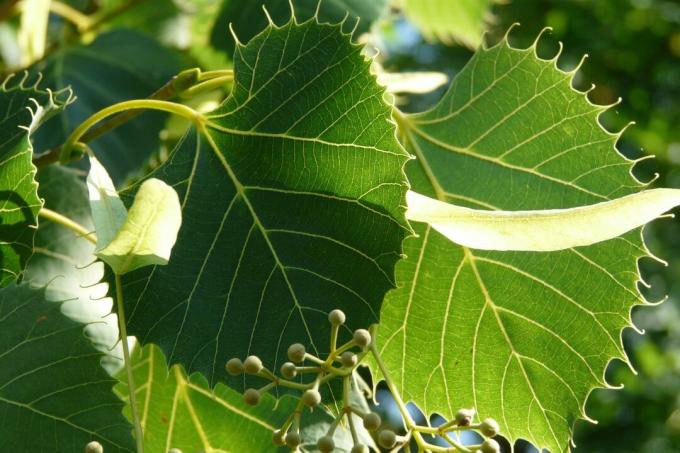
Tip: The appearance of summer and winter linden is very similar and a distinction is only possible based on small features. The leaf of winter linden is bare on the upper side, whereas summer linden leaves are hairy on the upper side. The fruits of winter linden are rather soft and crushable, those of summer linden are hard and clearly ribbed. You can also distinguish the trees on the bark: The bark of winter linden is often much earlier raised, ribbed and longitudinally fissured, whereas summer linden even more finely furrowed in middle age are.
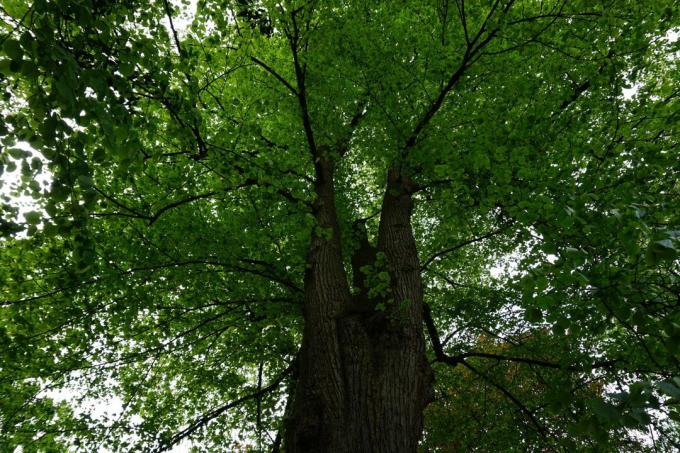
Planting linden trees: location and procedure
Regarding the location, linden trees are quite frugal. They prefer sunny to partially shaded and warm locations. The soil should ideally be permeable and well ventilated. Winter linden trees can also tolerate alternating moisture. Furthermore, linden trees generally have moderate nutrient requirements and can cope well with one or the other dry period. However, there are clear differences between summer and winter linden trees:
Summer linden trees need more warmth and have higher nutrient requirements. They prefer soils with a higher pH value, so that before planting and also afterwards, liming at regular intervals, for example with ours Plantura Bio lawn and garden lime can be useful.
Before planting, think carefully about which linden tree suits your location. There should be enough space for the mostly spreading crown growth. In addition, many linden trees are often affected by aphids during flowering. These hardly damage the tree, but they release sticky honeydew. Therefore, you should not plan any parking spaces, pools or seating under linden trees.
Planting linden:
- The best time to plant linden trees is autumn, before the first frosts.
- The planting hole should be at least twice as large as the root ball.
- Mix the excavated earth with good soil, for example ours Peat-free Plantura organic universal soilto improve soil quality in the long term.
- In the case of bale goods, open the bale cloth or the wire ball, but do not remove it. Repot the pot, then insert the plant so that the root neck is flush with the surface of the soil.
- In the case of large linden trees, set two stakes for the tree connection.
- Fill the planting hole with soil mixture and press down firmly with your full body weight.
- Model a casting ring from excess soil and pour it generously.
- In the next year, supply the tree with water when it is dry.
Tip: Our Plantura organic universal soil is an asset for the linden tree both on heavy, dense soils and on light, sandy soils. The high content of organic material loosens the soil on the one hand and increases the water and nutrient storage capacity on the other.
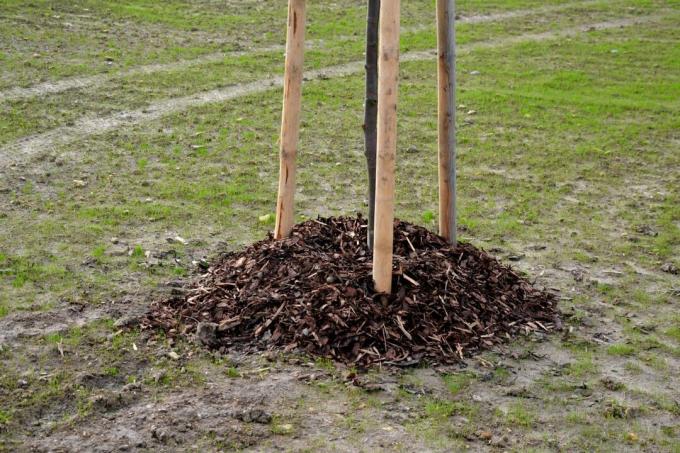
Linden tree in a pot: It is also possible to grow linden trees in pots. Particular attention should be paid to a suitable variety and a sufficiently large pot. For example, the ‘Monto’ or ‘Green Globe’ varieties are ideal because of their very slow and low growth. Our substrate, for example, is suitable Plantura organic universal soil outstanding. It is peat-free and thus saves up to 60% CO in production2 a. When growing linden trees in pots, make sure that they are watered regularly and that the water can drain off well so that waterlogging does not occur. In addition, potted linden trees need better protection in winter. Note that with the linden tree, the pot has to get bigger and bigger and should hold at least 600 liters after a few years.
Proper care
By and large, linden trees are very easy to care for. From a certain age, thanks to their extensive root system, linden trees no longer need to be watered or fertilized. In addition, linden trees are very easy to cut and can be brought into pretty much any shape with a little effort.
Linden tree in winter: As a rule, linden trees are hardy with us. Only in the first years of growth are the plants usually a little more susceptible. It helps to spread some brushwood or fir branches around the tree disc as protection.
Water and fertilize linden trees
Especially in the first years of growth, linden trees should still be watered during hot and dry periods. This is no longer necessary later, as the roots of the linden tree then ensure an adequate water supply.
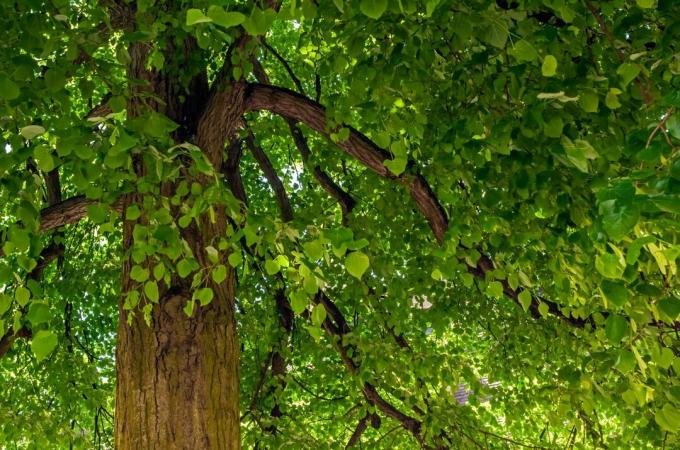
Fertilization is also no longer necessary from a certain size. Young summer linden trees in particular enjoy a few extra nutrients in spring. For example, our primarily organic Plantura organic universal fertilizer with a three-month long-term effect. Alternatively, ready-made compost is also suitable.
Cut linden trees
Linden trees store hardly any tannic acids or toxins in their wood, which makes them very susceptible to insect and fungal attack. Since a cut inflicts wounds on the linden tree, this increases its susceptibility even more. To compensate for this, linden trees respond to a cut with a strong new shoot. Frequently cut linden trees often become hollow from the inside, which can lead to a certain instability with age. Without pruning, linden trees grow into stately trees, but can be kept small and given the desired shape by regular pruning. It is even possible to use a row of linden trees as a hedge. Either early autumn to September or spring before flowering is recommended as a cutting time. In principle, old and rotten branches should be completely removed when cutting. In the next step, you can then cut your linden tree further, depending on the shape you want.
Tip: If you cut linden trees in autumn, they can store fewer reserve substances and the upward growth is less strong.

Common pests and diseases of the linden tree
Most linden tree diseases are caused by fungi. Three of the most common ones are briefly described here.
- Leaf tan: The one caused by the pathogen Apiognomonia tiliae Leaf tan caused can be recognized by the brown spots with a dark border on the leaves. They often start from the galls of various insects. Since the fungus overwinters in infested leaves on the ground, it is important to remove the foliage in the fall. In addition, a vigorous pruning of infected branches can help into healthy wood.
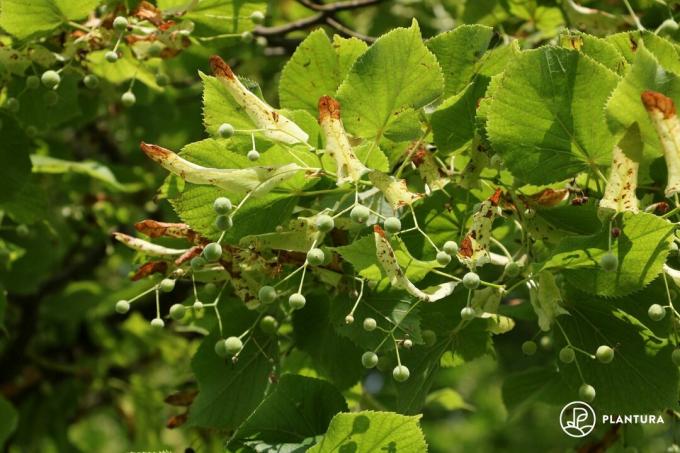
- Cercospora leaf spots: Caused by the fungus Cercospora microsora Here, too, small, 3 to 4 mm large brown spots with a dark edge form on the linden leaves. In addition, the fungus can attack leaf stalks and twigs. The main source of infection in spring is also here infested autumn leaves, which is why these should be removed in the event of an infestation. In addition, you should cut back affected branches, which can be recognized by the necroses that develop there.
- Branch dying: The branch dieback is caused by the fungus Stigmina pulvinata triggered and can be recognized by the fact that linden trees no longer sprout in spring and many branches die off. Most of the time the trees can compensate for this and at the end of the growing season the tree has a closed crown again. But that doesn't mean that the tree is healthy again. Control measures are not yet known, but a strong pruning of infected parts of the plant can help here too.
Linden trees are also attacked by some animal pests. We would like to briefly introduce three of them to you:
- Aphids (Aphidoidea): Aphids, such as the linden tree louse (Eucallipterus tiliae) like to attack linden trees and feed on their assimilates. Aphids secrete so-called honeydew. This is a very sticky liquid that bees use to make honey. However, this also sticks everything under the linden trees and can possibly continue to hinder the tree in photosynthesis through the settlement of sooty fungi. Usually the problem regulates itself by natural opponents, such as the ladybirds. Small linden trees can also be supplemented with a neem preparation like ours Plantura pest free neem be treated. It consists of a 100% herbal and natural active ingredient that is not harmful to bees.

- Great linden jewel beetle (Ovalisia (Scintillatrix) rutilans): An infestation with the great linden beetle is difficult to recognize in the early stages from rather unspecific symptoms. These include, for example, the wilting of leaves in the crown, irregular swelling of the bark and sap flow. Only later does the bark burst and parts fall off. If you look closely, you can also see the oblique boreholes for the pests in the trunk of the linden tree. Since linden splendor beetles are under protection, direct control is not permitted. The best protection is therefore prevention, by making sure that the trees are as healthy as possible. In particular, trees that have already been damaged or stressed are attacked by the linden beetle.
- Linden spider mite (Eotetranychus tiliarium): Linden spider mites can hardly be seen with the naked eye, but an infestation can still be recognized by the typical webs. Glue rings, which are attached around the trunk in winter, are suitable for prevention. For the control you can fall back on natural opponents of spider mites, for example predatory mites.
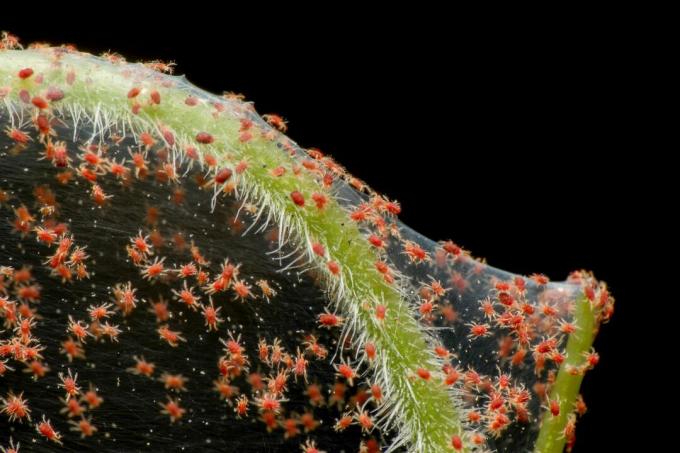
Care for linden trees at a glance:
- Young linden trees need regular watering during dry periods.
- The same applies to fertilization, which can be done on young trees in spring.
- If you want to shape your linden tree into a certain shape, it is best to cut it in early autumn or spring.
- Various pathogens and fungi can clog linden trees. The infestation can often be tolerated, however, as the linden trees are not seriously damaged.
Multiplication
Basically, linden trees can be propagated vegetatively or generatively using linden seeds. When growing from linden seeds, however, a few years more patience is required and the chances of success are significantly lower. This is because linden seeds develop powerful germ inhibitors that must first be overcome.
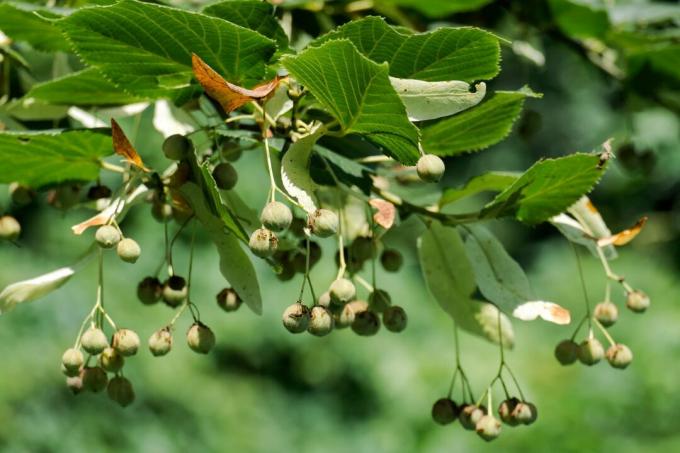
In the case of linden trees, vegetative reproduction is a lot easier, because the trees grow new saplings by themselves from superficial roots. Once such a sapling has been found, it is cut out very generously with the spade and either planted directly in its new location or initially in a pot.
If you don't want to wait until you happen to find a linden sapling, you can also actively encourage linden trees to drive out of the trunk base. This process is also known as propagation via demolitions.
- Pile up substrate around the lower part of the trunk, such as wood chips, bark mulch or moss.
- By making shallow cuts on the trunk (before the substrate is spread out), the tree can be stimulated even more to sprout.
- Now you have to wait and keep the substrate moist until new shoots grow. These form their roots in the previously poured substrate.
- In the fall, after discovering a new shoot, carefully inspect the new root. If this is already well developed, the sapling can be carefully cut off and placed in a pot with a more nutrient-rich substrate like ours Plantura organic universal soil is filled, be transplanted.
- Until you plant your new linden tree, you should ensure that it has a regular supply of water and nutrients. It is also important to protect the young trees from frost in the first few winters.
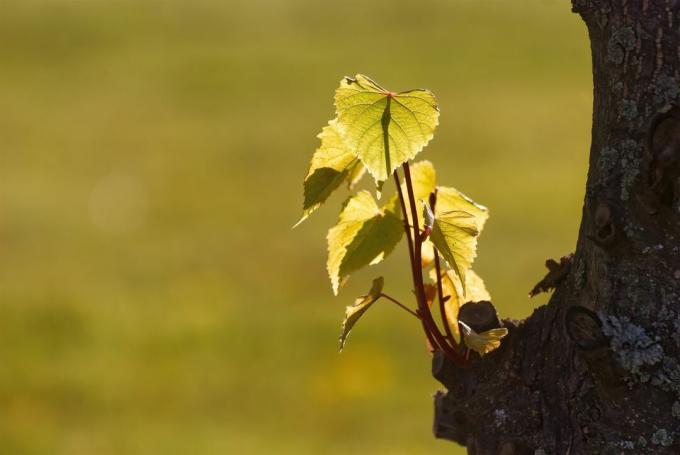
Linden trees do not only look good as a splendid garden tree and insect pasture, their leaves and flowers can also be used in a variety of ways in the kitchen and medicinal medicine. We'll go into that in our article Uses of linden trees a.
